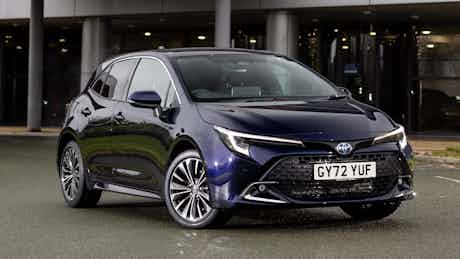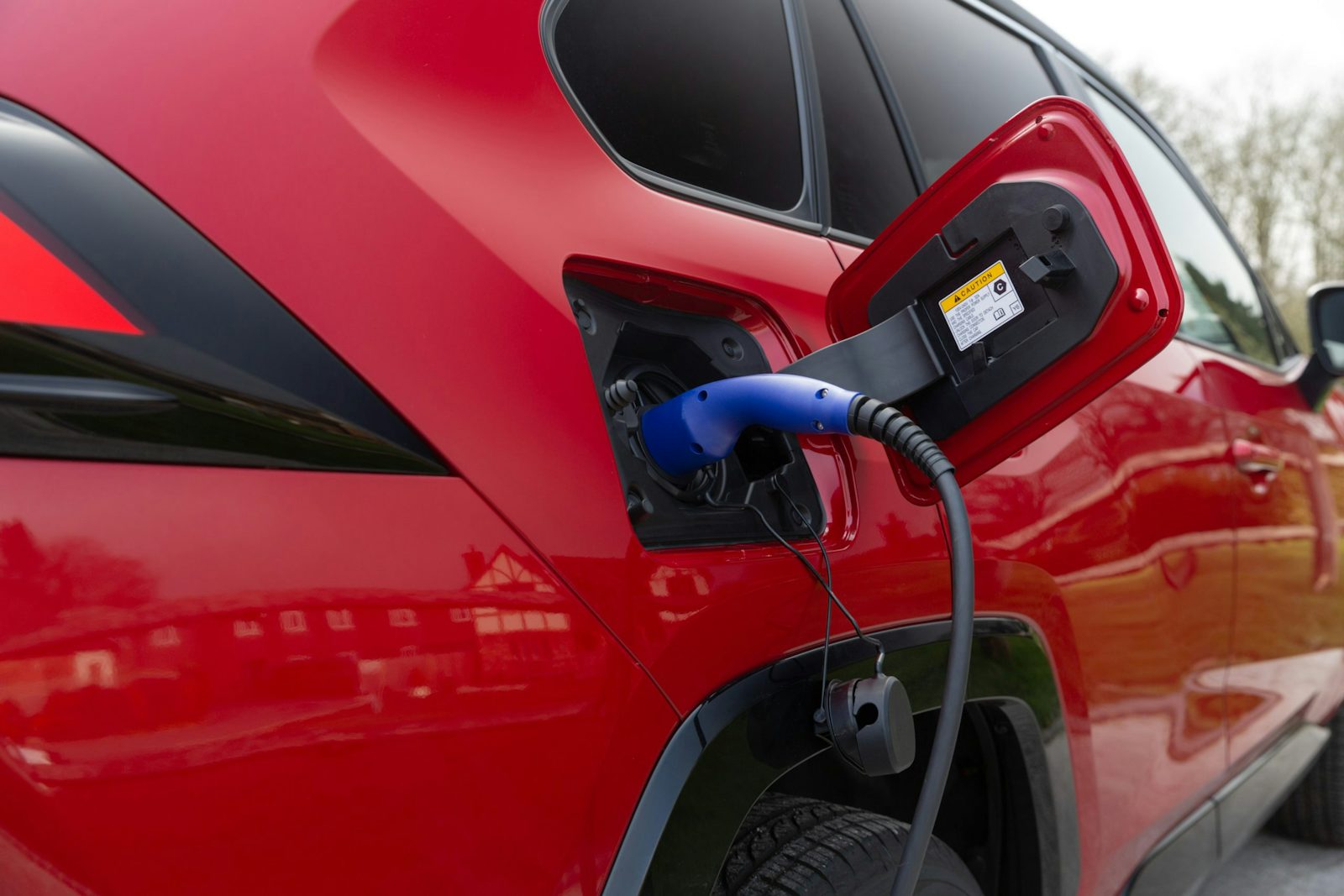What is a hybrid car and how do they work?
June 22, 2023 by carwow staff

Wondering what a hybrid car is? Wonder no more
A hybrid car is powered by two different sources: an internal combustion engine, and a battery and an electric motor.
There’s more than one type of hybrid car, though, and different hybrids work in different ways, and this article will explain everything you need to know.
What is a hybrid car?
The term ‘hybrid’ comes from the Latin word ‘hybrida’, meaning the offspring of a domestic pig, and a wild boar.
The term has since been applied to various things, particularly plants created from two different species, and in 1997 it appeared on cars, when the first mainstream hybrid, the petrol-electric Toyota Prius (which, fittingly, is Latin for ‘first’), arrived on the scene.
The vast majority of hybrid cars pair a petrol engine with an electric motor, but a handful offer a diesel-electric combination; this are rare (Mercedes is the only firm offering these at present), so for the purposes of this article we’ll use petrol-electric as the default assumption.
How do hybrid cars work?
While different types of hybrid cars work in different ways, in essence the idea is that a petrol engine exists to power the car on long journeys, with a battery and electric motor providing power for shorter trips, particularly urban ones, where emissions are more of a concern.
Types of hybrid cars
As set out above, there are different types of hybrid, which we’ll detail now.
Self-charging hybrid

Self-charging hybrids can’t be plugged in – their batteries are charged either by the petrol engine acting as a generator, or by power recuperated from braking, which is converted from kinetic energy into electrical energy; this is known as regenerative braking.
Self charging hybrids can run on battery power only, shutting off the engine for zero-emission motoring – but they can typically only do this for short distances (perhaps a mile) and at low speeds (perhaps up to 25mph).
Toyota and its posh sibling Lexus are the best-known makers of self-charging hybrids, but cars like the Renault Clio and Ford Kuga are also available with this system.
Plug-in hybrid
Plug-in hybrids, also known as PHEVs (short for plug-in hybrid electric vehicle) come with an engine and a battery/motor combo, as self-charging hybrids do but, as the name suggests, their batteries can be charged up from a socket, in addition to the batteries being charged by the engine and brakes.
PHEVs have larger battery packs and more powerful motors than self-charging hybrids, allowing them to travel much further (20-80 miles, depending on the car), and at higher speeds (70mph and beyond).

Plug-in hybrids tend to be a fair bit more expensive than self-charging models, though they can be very attractive to company car drivers thanks to favourable tax arrangements.
Many, many different models of car are offered with plug-in hybrid technology; it tends to be offered as an alternative to conventional petrol or diesel power on everything from the relatively humble Volkswagen Golf, to the high-end Porsche Cayenne.
Some supercars, like the McLaren Artura and Ferrari SF90 Stradale, use plug-in hybrid power in the name of performance.
Mild hybrid
Mild hybrids aren’t really hybrids at all – not in the sense we’ve discussed so far, anyway. A mild hybrid has a (very small) electric motor and a (similarly small) battery, but they can’t power themselves by electricity alone.
Instead, the battery and motor can provide the engine with assistance when moving off from a standstill, while the engine may be able to turn off when the car is travelling downhill, allowing the car to coast while the battery keeps systems like the power steering running. Think of a mild hybrid system as a sophisticated stop-start system and you won’t be far wrong.
Benefits of hybrid cars
Self-charging hybrid benefits
- Improved fuel economy, particularly in town
- Zero-emission motoring, particularly in town
- Tend to be very smooth
- Proven technology with good reputation for reliability
- No need to plug in regularly
- Cheaper than plug-in hybrid tech
Plug-in hybrid benefits
- Compelling from a tax perspective
- Meaningful electric range can allow for zero-emission commutes
- Behaves like an electric car when charged
- Can manage motorways on battery power
- Tech lends itself to performance or economy
Disadvantages of hybrid cars
Self-charging hybrid disadvantages
- Rely on petrol engine most of the time
- Not so advantageous for company car tax
- Not known for engaging driving experiences
Plug-in hybrid disadvantages
- Expensive compared to SC hybrids and conventional petrol and diesel cars
- Have to be plugged in regularly to make the most of them
- Overall fuel economy poor if battery isn’t charged regularly
- Heavier than conventional cars
How to drive a hybrid car
You don’t need any special skills to drive a hybrid car, but knowing how to get the most out of them makes them more rewarding.
With a self-charging hybrid, smooth acceleration is the name of the game, as this will make the most of the continuously variable transmission (CVT) gearboxes most have; these can send the engine’s revs soaring under heavy acceleration.
All hybrids have automatic gearboxes, which are operated in an almost identical fashion to conventional autos. Some may have an additional mode that raises the power of regenerative braking, increasing the rate at which the car slows when the accelerator is released, and sending more power back to the batteries.
Hybrids, and particularly plug-in hybrids also allow you to force the car to drive in electric mode, if there is enough charge in the batteries. Most offer an ‘auto’ mode that lets the car work out what should be powering it, while some may offer a mode that uses the battery and motor together for maximum performance.

PHEVs also tend to have a ‘save’ mode, which relies on the engine, keeping the batteries charged for when you get off the motorway, say, and want to use zero-emission mode in town.
Each hybrid system works in a different way, though, so you are well advised to careful read the manual at your earliest convenience.
Some of the more sophisticated plug-in hybrids can even be programmed to switch to battery, or petrol power, when you get to certain geographical waypoints, allowing you, for example, to cruise around your neighbourhood in zero-emission mode; this is known as geofencing.
Are hybrid cars worth it?
This is one of those really unhelpful ‘it depends’ answers.
If you cover 40,000 miles a year, in all honesty you are best off getting a diesel car thanks to the strong economy and long range these offer. You would most likely be spending too much time on the motorway to make use of a self-charging system’s electric mode, and would probably not be stopping often enough to charge up a PHEV’s batteries and make the most of the improved economy these can bring.
If you are a company car driver who is in a position to be offered a plug-in hybrid, you may find the tax advantages a PHEV offers thanks to its low official carbon dioxide emissions makes it hard to beat – all the more so if your commute can be done on battery power alone.
If you drive a fair bit in town you may find a self-charging hybrid a smooth, quiet companion, while drivers who consider themselves ‘normal’ or ‘average’ in terms of mileage and requirements could happily live with either a PHEV or an SC hybrid – though be aware a conventional petrol or diesel model will typically be more affordable to buy, so have a scan through the pros and cons above to help make your decision.
Hybrid car FAQs
Are all hybrid cars automatic?
Yes, all hybrid cars have an automatic gearbox. One or two, such as the Honda CRZ, have over the years been offered with a manual transmission, but this is no longer the case.
Do hybrid cars need charging?
All petrol electric hybrid cars need charging, but the batteries in a self charging hybrid car can only be charged by the engine and brakes, while a plug-in hybrid can also be charged from a home or public charger. You can still drive a plug-in hybrid on petrol power if its batteries are flat, though.
Are hybrid cars cheaper to run?
From a tax point of view, a plug-in hybrid will offer strong advantages for company car drivers – though an electric car will be even more favourable.
Around town, a self-charging hybrid will typically be noticeably more efficient than a conventional petrol or diesel car – though this advantage can drop away on high-speed roads.
Plug-in hybrids can return incredible all-round efficiency (think 100mpg+) if you charge up their batteries regularly and run on electric power at every opportunity, but fail to charge them up and the extra weight of the battery and motor sees the engine have to work hard, which can result in worse efficiency compared to a straight petrol or diesel car.
Which hybrid car is best?
The Honda Civic self-charging hybrid won a carwow 2023 ‘Buy It’ award, and is easy to recommend.
The Mercedes GLC 300 e plug-in hybrid has an impressive electric only range of 80 miles and is a luxurious, comfortable car.
If neither of those appeal, though, hybrid cars have been popular with manufacturers for some time, and you are bound to find one to suit your needs and budget.
Cars Change? Carwow!
Looking for a new set of wheels? With Carwow you can sell your car quickly and for a fair price – as well as find great offers on your next one. Whether you’re looking to buy a car brand new, are after something used or you want to explore car leasing options, Carwow is your one stop shop for new car deals.















